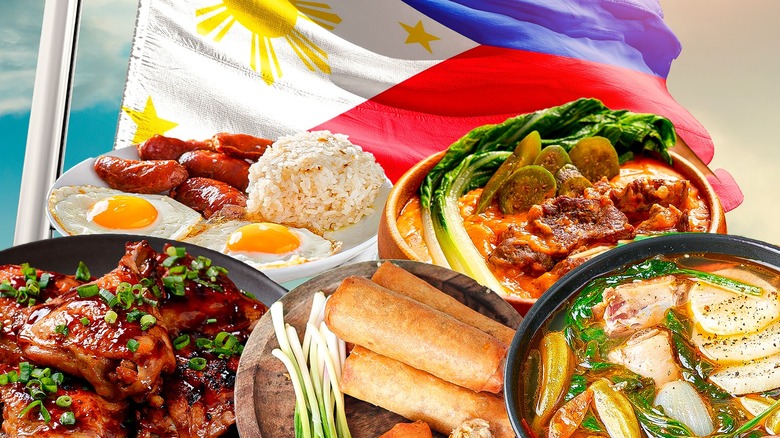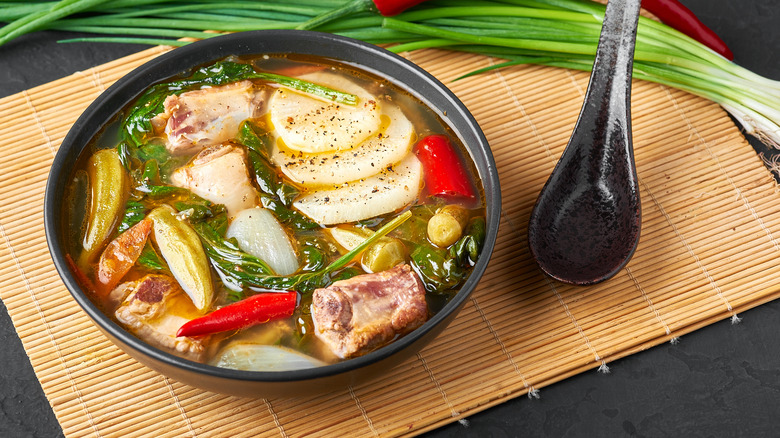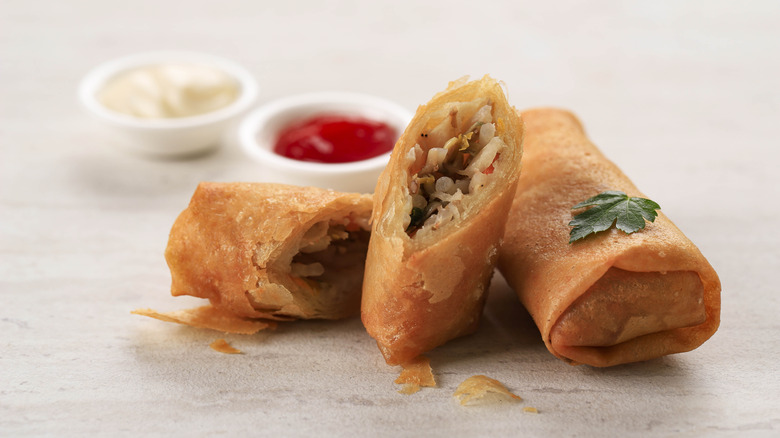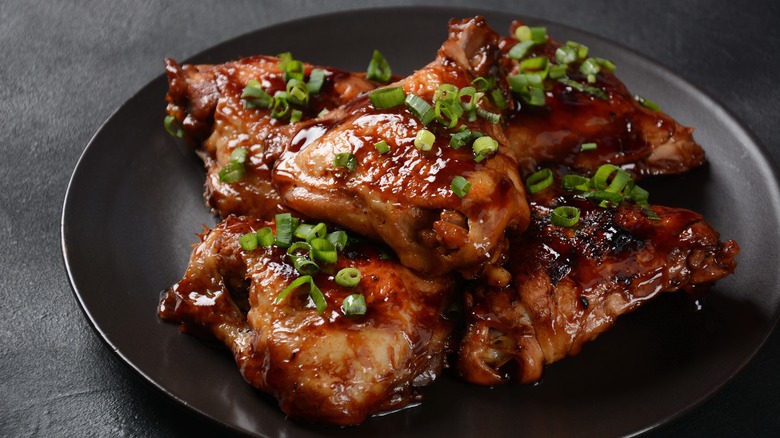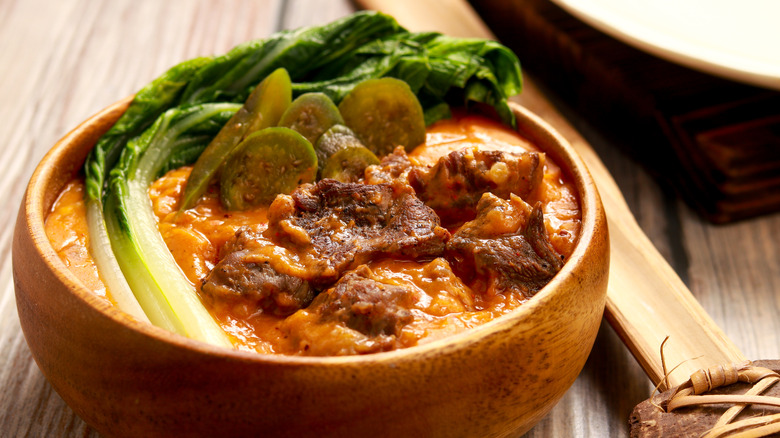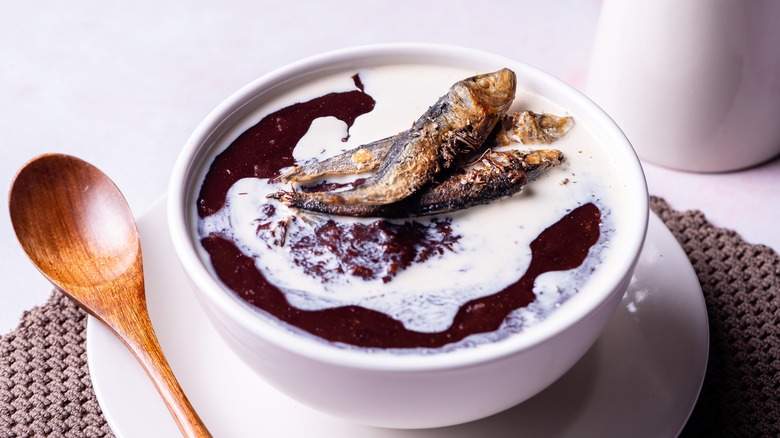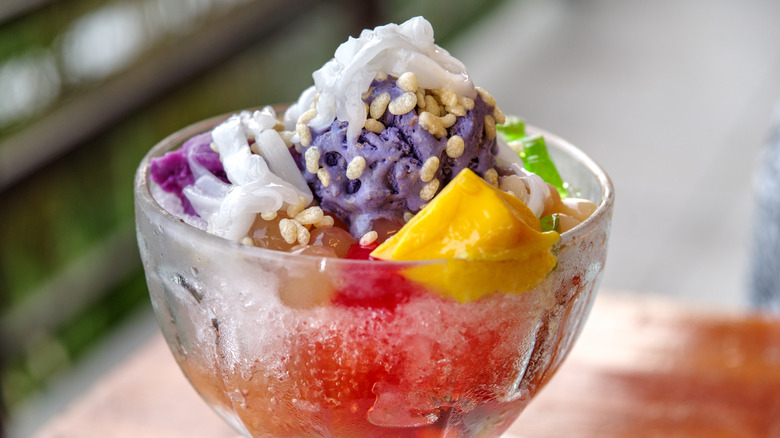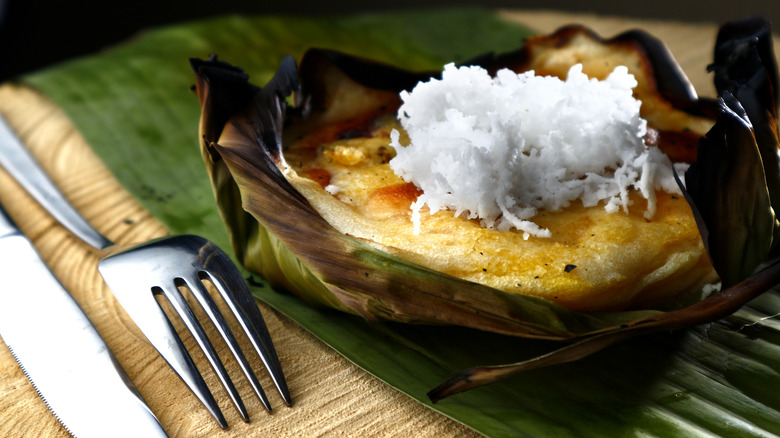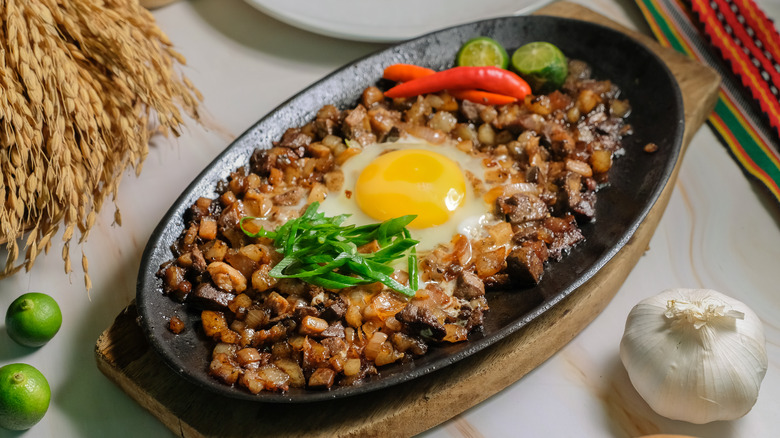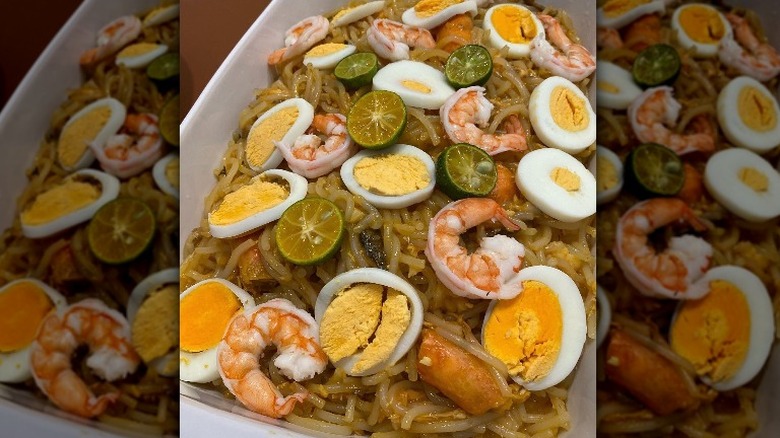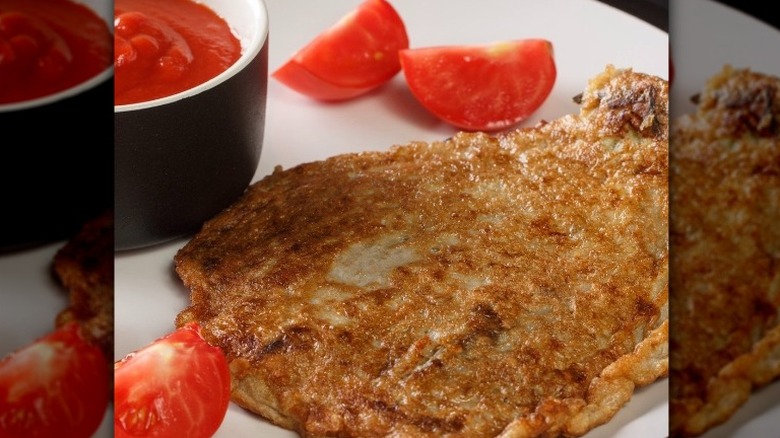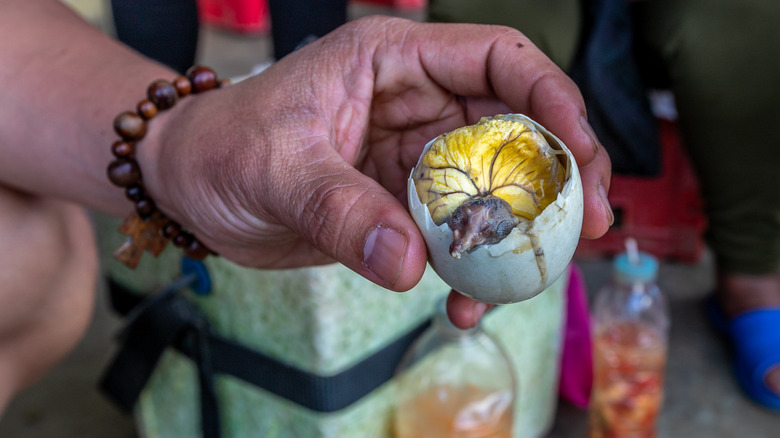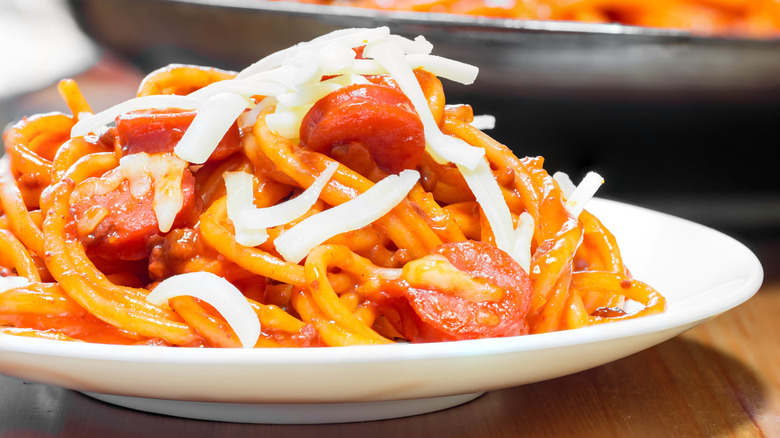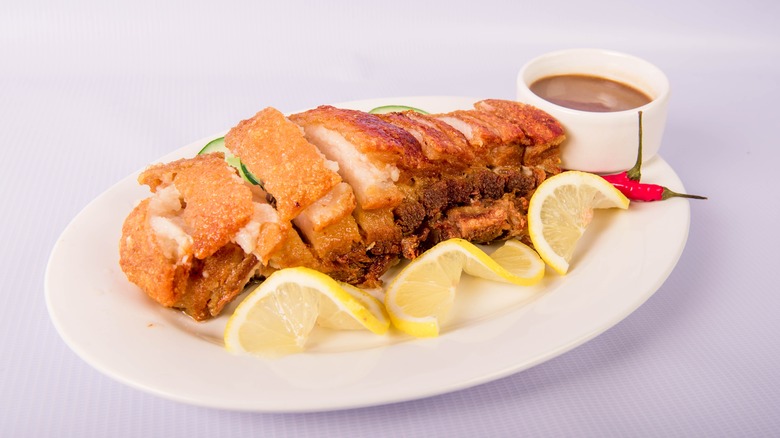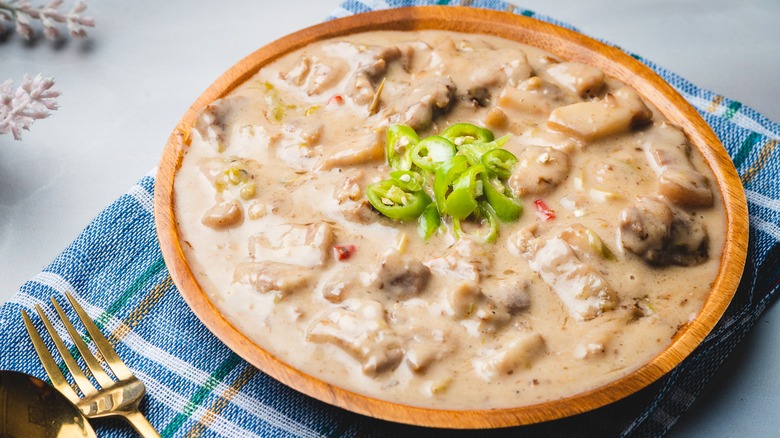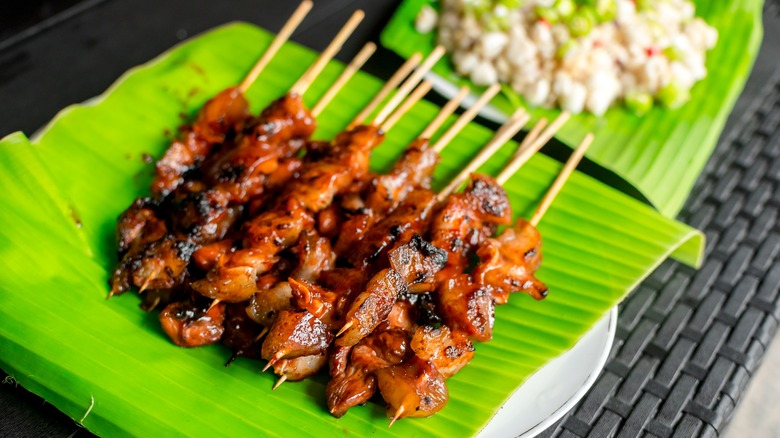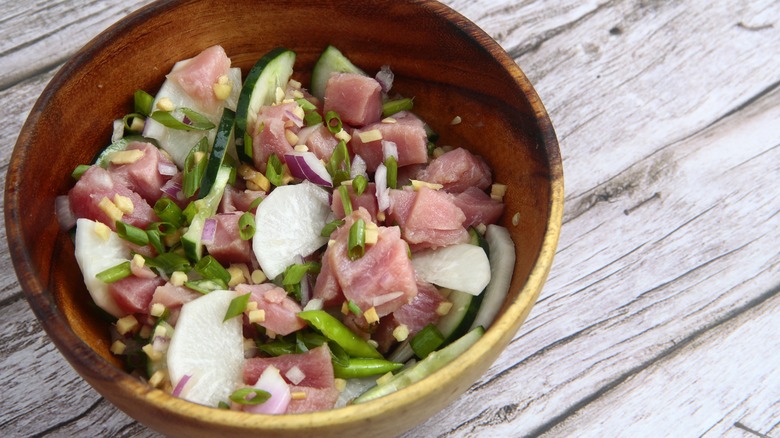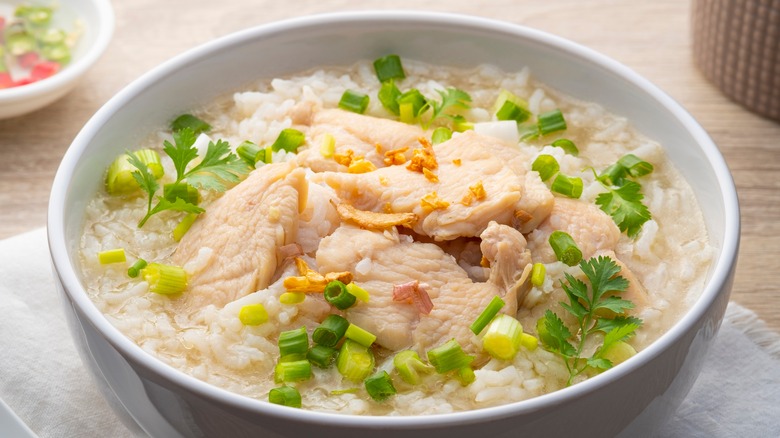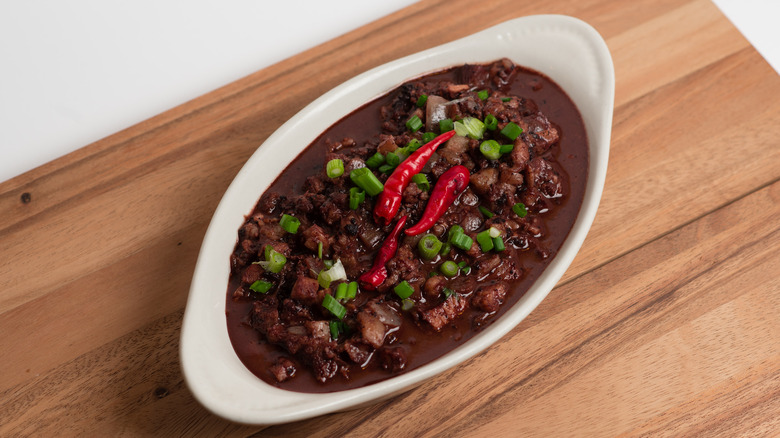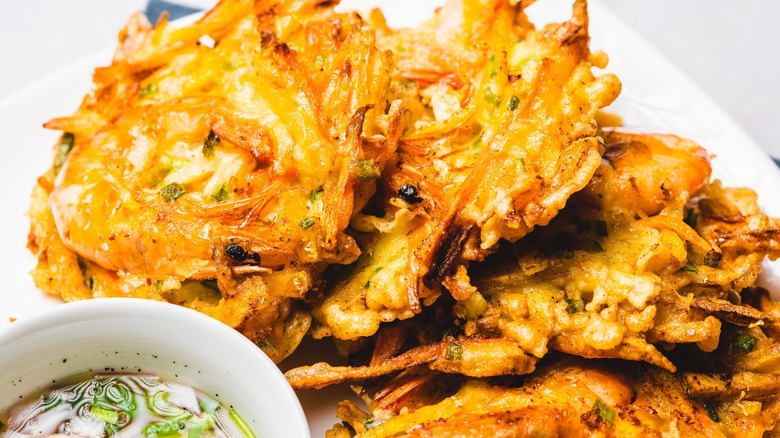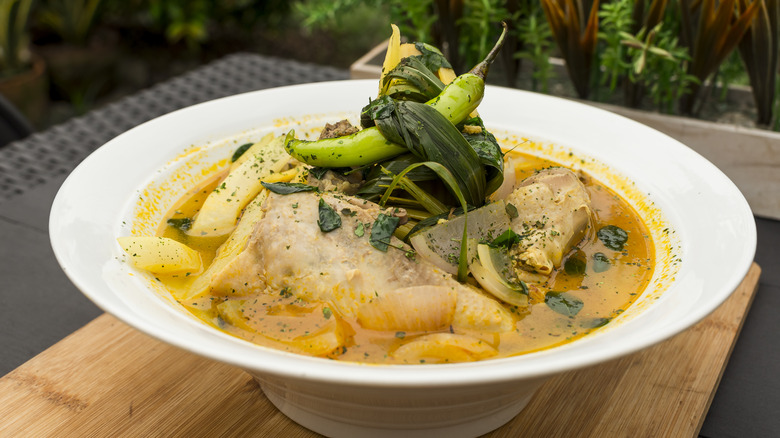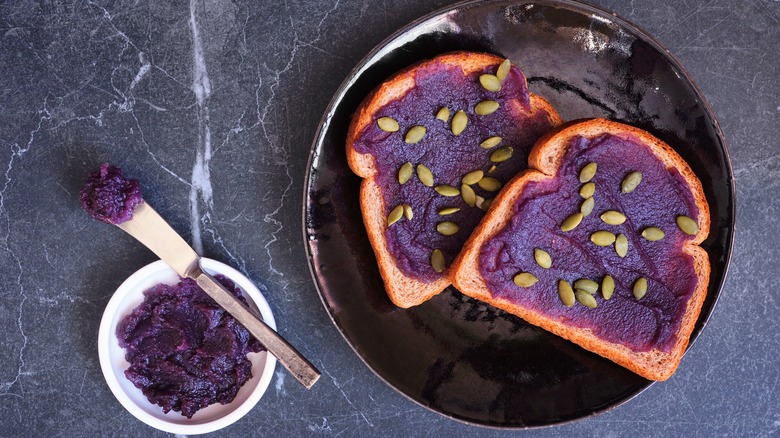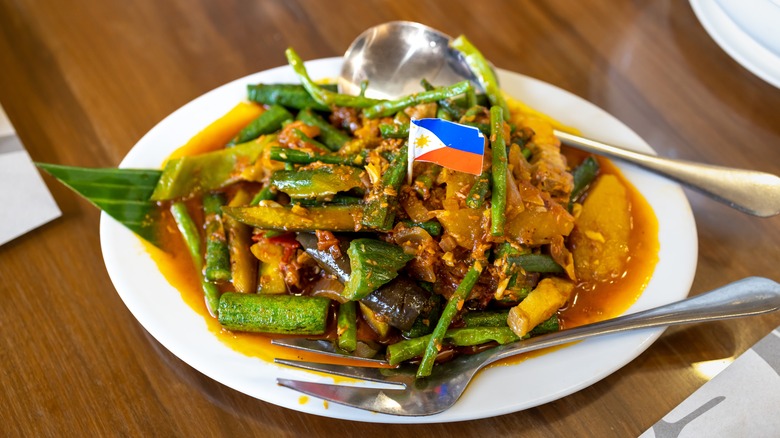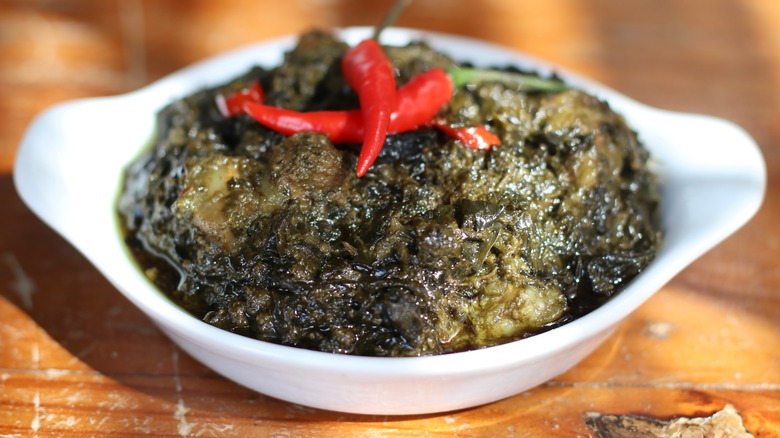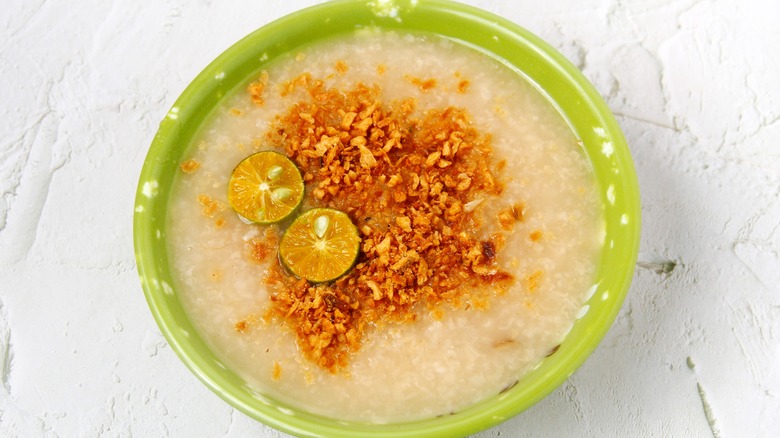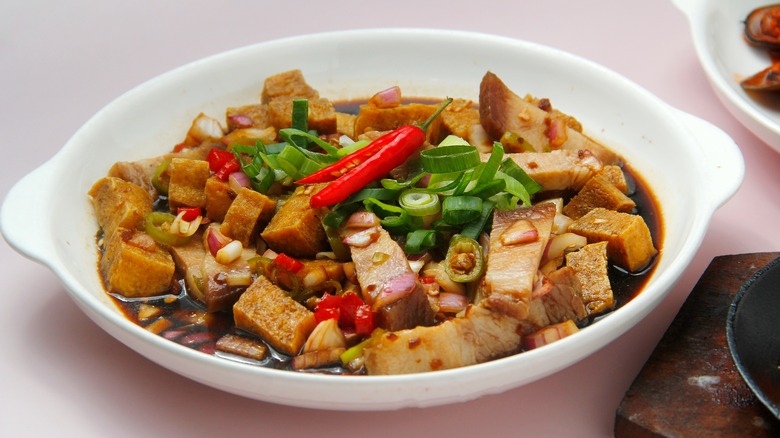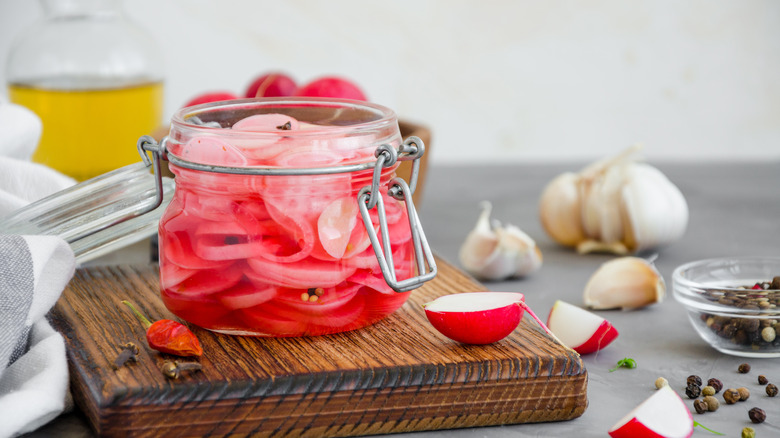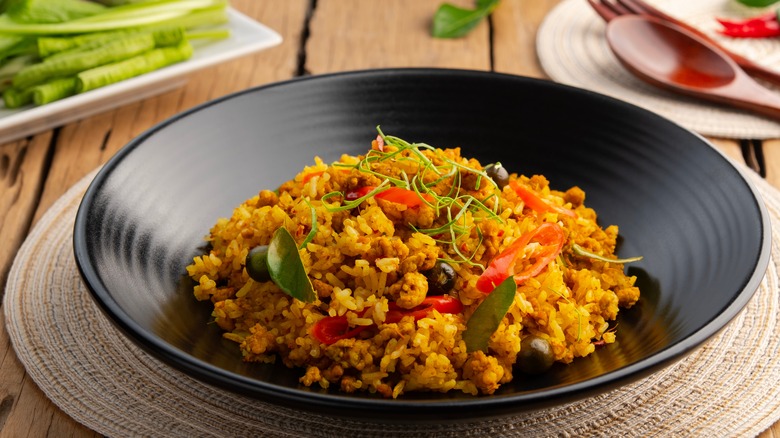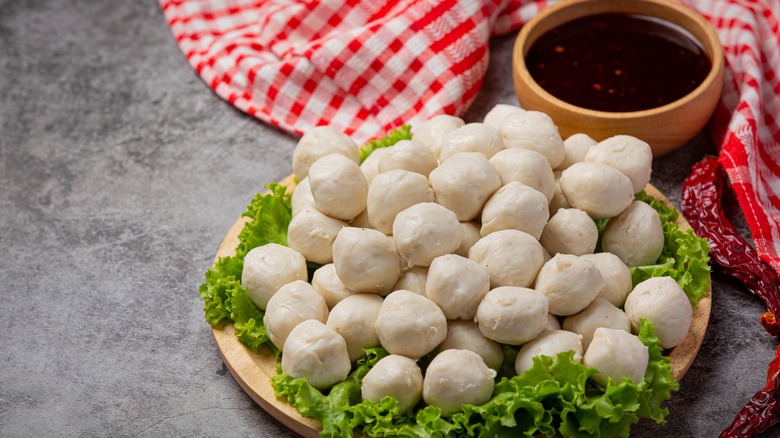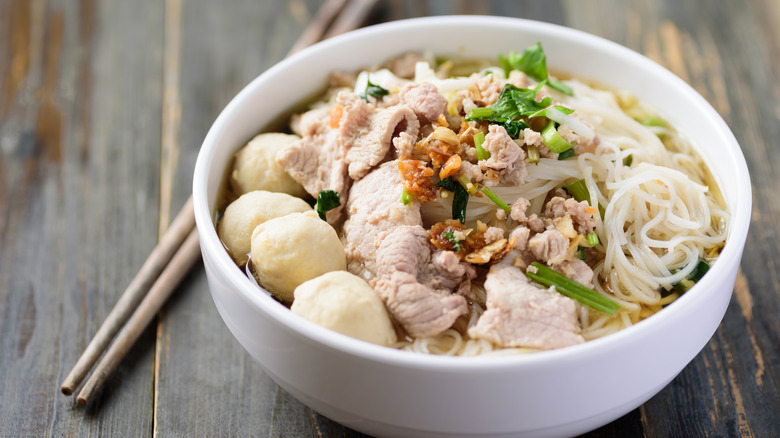35 Popular Filipino Dishes You'll Regret Not Trying Once
We may receive a commission on purchases made from links.
The first food in the Philippines was shaped by the environment. Early human inhabitants of these mountainous islands had a diet rich in tropical produce and seafood, adopting rice as a staple once it was introduced around 3400 B.C.E. Subsequent centuries of interaction with foreign cultures, including long periods of colonization by Spain and the U.S., introduced new dishes and ingredients. Further innovations were born out of scarcity and hardship, as resourceful chefs found ways to make use of limited resources. These many factors have created a modern cuisine like no other in the world: One in which unlikely flavor combinations and diverse international influences come together in delicious harmony.
Long overlooked by mainstream American culture, Filipino food is finally being recognized in the U.S. for its diversity and ingenuity, something that culinary experts have been predicting for years. Here are some essential Filipino foods you need to try at least once.
Sinigang
In a 1975 essay, legendary Filipino food writer Doreen Fernandez argued for sinigang to be recognized as her country's quintessential dish. For Fernandez, it was the simplicity and adaptability of sinigang that made it so representative, and the way the dish makes use of the bounty of the land with indigenous ingredients. Fernandez saw sinigang as something all levels of society can make and enjoy, with whatever fresh ingredients are at hand.
So what is sinigang? Put simply, it's a sour soup, one of many found across Southeast Asia, such as Thai gaeng som or Vietnamese canh chua. Sour soups or curries are typically flavored with an acidic fruit, but exactly which fruit is used can vary widely. For sinigang, tamarind is a popular choice, but other options include guava, green mango, or calamansi, a local citrus variety. The soup also typically includes fish or meat with assorted vegetables, such as tomatoes, long beans, eggplant, or radish. Sinigang is easily customizable to the taste of chef and diner alike since it's often prepared with light seasoning so that diners can adjust their own bowl to their liking with sawsawan (dips) like chili and fish sauce. The tart flavors of sinigang are designed to complement rice, the Filipino staple.
Lumpia
When immigrants from the Fujian province in China settled in the Philippines and Indonesia, they introduced both countries to a rolled pastry stuffed with a filling called lumpia, meaning "moist cake." This was the origin of Filipino lumpia, one of several foods on this list derived from Chinese influence. Similar to spring rolls, lumpia have a simple wrapper made from flour and water and stuffing that may include meat, vegetables, or both. They are fried until golden and crispy and served with a dipping sauce.
One popular lumpia is lumpia Shanghai, which is rolled smaller and thinner than other lumpia varieties and stuffed with a Chinese-influenced mixture of pork, egg, and minced carrot. While other lumpia may be paired with Filipino condiments like Mama Sita's Garlic Vinegar or Fila Manila Banana Ketchup, lumpia Shanghai is often served with a more Chinese-style sweet and sour dipping sauce (though this dish doesn't have anything to do with the city of Shanghai). A sweet version of lumpia, stuffed with gooey, sugar-coated fruit slices, is called turón or banana lumpia for its most typical filling, though it may also be filled with other fruits like mango or jackfruit.
Adobo
Adobo, meat marinated in soy sauce and vinegar, is one of many Filipino dishes with Hispanic influence, thanks to Spain's colonial rule of the islands for nearly three centuries. In different parts of the Spanish-speaking world, the word adobo has different meanings for specific food preparations, but it literally means "marinated." In Spain, the original adobo was meat cooked after being marinated in vinegar, first to preserve it and later primarily for flavoring.
Spanish adobo was introduced to the Philippines during the colonial era (16th to 19th centuries), where it fits right in with a local appreciation for sour flavors and several indigenous styles of food preparation involving vinegar or sour juice, such as kinilaw, a raw fish salad, and sinigang. Filipino adobo was adjusted to local tastes with the addition of soy sauce, itself introduced from China, in place of salt. Most recipes also include garlic, bay leaves, and black pepper, but Filipino adobo varies widely from one region to another. It can be made with any protein, with or without vegetables, and different regions add different ingredients to the sauce, such as coconut, turmeric, or mashed pork liver.
Kare-kare
There are at least three different stories as to the origin of this comforting Filipino peanut stew, but it's often believed to be influenced by Indian cuisine, and the name might come from Tamil kari, the same word that is the root of English "curry." Kare-kare does bear a resemblance to the stewed meat and vegetable dishes of South India, albeit with fewer spices and a milder flavor profile, but some of its ingredients, like peanuts and the spice annatto or achiote, originated in the Americas and arrived in the Philippines during the era of Spanish colonization.
Kare-kare's nutty, savory broth is made with garlic, onion, and powdered annatto seed, which provides a reddish color and a subtle earthiness, as well as a mixture of toasted ground rice and peanuts (peanut butter may be used as a shortcut). It's traditionally prepared over coals in a clay pot called a palayok, with a rich, fatty meat, traditionally oxtail, and vegetables like baby bok choy or long beans, which are blanched or steamed separately and added to the stew after the meat. A more creamy variation called kare-kare sa gata is made with coconut milk. Typically, kare-kare is seasoned minimally but may be adjusted at the table with chili or bagoong (pronounced ba-go-ong), a fragrant, salty fermented shrimp paste.
Champorado
Spanish ships traveled regularly between the Philippines and Mexico when both were Spanish colonies. This resulted in culinary interchange that can be seen in dishes like Filipino champorado, which originally derives from Mexican champurrado, a thick, sweet beverage made with chocolate and cornflour. In the Philippines, where rice, not corn, was the staple grain, corn was swapped for glutinous rice (also called sticky rice), creating a sweet rice porridge or pudding which also lacks the cinnamon of Mexican champurrado.
Champorado is made by melting Filipino tablea, concentrated tablets of pure roasted chocolate, into sticky rice porridge, along with sugar. The dish is traditionally served for breakfast, topped with a drizzle of evaporated, condensed, or coconut milk and a side of tuyo, a type of dried, salted herring. Bold and unique flavor pairings are characteristic of Filipino cuisine, and this combination of sweet, creamy chocolate porridge with salty, savory dried fish is a signature example.
Halo-halo
Halo-halo means "mix-mix" in Tagalog, and this action describes what you're meant to do before enjoying this brilliantly-colored frozen dessert that Anthony Bourdain loved. Halo-halo consists of shaved ice layered in a glass with various sweet toppings or small portions of other desserts, such as ice cream and flan. Crispy puffed rice or other dry toppings may be added at the end, as well as a drizzle of evaporated milk. Cold, refreshing, and bursting with contrasting textures and flavors, every bite of halo-halo is slightly different from the last.
Originally inspired by kakigori, a Japanese shaved ice dessert introduced to the Philippines in the mid-20th century, halo-halo bears a resemblance to shaved ice dishes prepared with various toppings throughout East and Southeast Asia, such as Korean patbingsu and Singaporean ais kacang. However, the ingredients used in halo-halo are distinctly Filipino: jackfruit, banana, beans in syrup, jelly, ube (purple yam), and shredded fresh coconut, to name just a few of the nearly endless possibilities.
Ice cream with pandesal
Ice was first imported to the Philippines from the U.S. in the mid-19th century, and iced desserts like flavored sorbetes (ice cream) were first encountered in this time period. Limited initially to the tables of the elite, ice would become more accessible in the 20th century, during the American occupation. One of the first permanent structures built by the U.S. government in the Philippines was an ice plant, established in 1902. This paved the way for ice cream to become a widespread and familiar part of Filipino food culture, with ubiquitous sorbetero street vendors selling cones of "dirty ice cream," so-named because it's dirt cheap.
One thing that sets Filipino ice cream apart from other ice creams is that it may be made with the rich milk of carabao, a local type of water buffalo. Another unique feature is the range of flavors, which may include distinctive Filipino ingredients like ube (purple yam), sweet corn, keso (cheddar cheese), or macapuno (a sweet jelly that forms naturally inside some coconuts). Aside from a cone, Filipino ice cream may be eaten in a sandwich on a small white bread roll, called pan de sal, or pandesal. Though it might sound unusual from a Western perspective, ice cream sandwiches are also made with bread in some other Southeast Asian countries, such as Singapore.
Bibingka
One of many Filipino dishes to pair sweet with salty are these chewy, melty rice cakes with a caramelized top. Bibingka is eaten year-round but is especially associated with the Filipino Christmas season, and can be topped with cheese, salted egg yolk, red bean, sugar, and coconut, among other possibilities. There are numerous different kinds of bibingka, including biko, sprinkled with coconut milk and brown sugar, and cassava bibingka, made with a base of grated cassava (yucca) root instead of rice flour.
The word bibingka refers to the unique cooking method used to produce the cakes: High heat is applied on top and low heat on the bottom to melt and caramelize the toppings. Traditionally, bibingka is baked in a clay pot lined with banana leaves and piled up with hot coals to apply heat from above. In a modern restaurant kitchen, this may be achieved in the top rack of a convection oven or by other methods.
Sisig
Sisig is a classic example of pulutan, a small dish meant to be paired with alcohol. In fact, Anthony Bourdain called it "the best thing you could ever eat with a cold beer." It's a crispy, hearty stir-fry of chicken liver and pork parts with onion, sometimes also including an egg, and seasoned with chili, mayo, and calamansi lime juice. Sisig also pairs well with rice and may be made as a way of using up the leftovers from lechon, a whole suckling pig roast.
Sisig has changed quite a lot through its long history. The original version of sisig, dating back to the 18th century, was a sour salad served as a remedy. This became popular as a side dish, and in the mid-20th century, chefs started to add chopped, stir-fried meat from pig heads, such as the cheeks, snout, and ears to the salad so as not to let the meat go to waste. Chicken livers were added by a restaurateur in Angeles City, Philippines in the mid-1970s, creating the modern version of the dish.
Pancit palabok
Pancit is the Filipino name for noodles, and Filipino pancit are made from cornstarch or a mixture of cornstarch and rice flour, and there are several varieties that differ greatly in thickness. Pancit can be used to make many different noodle soups and stir-fried dishes, but one of the best known is pancit palabok, which is made with a type of noodle called bihon (when made with a thicker cornstarch noodle, it becomes the related dish called pancit luglug).
Pancit palabok is identifiable by its orangey broth, which is made with seasoned shrimp stock brightened with achiote or annatto, the same red spice found in kare-kare and popular in Latin American cuisines. Pancit palabok also includes a topping of shrimp, boiled egg, smoked fish flakes, pork cracklings, and toasted garlic, as well as calamansi juice, which provides an irresistible blend of contrasting flavors and textures to the dish.
Tortang talong
In different Spanish-speaking countries, the word torta (cake) or the diminutive tortilla can refer to many different dishes with a cake-like or loaf-like shape, including both sweet and savory. This includes Spain's tortilla de patatas, made from egg, onion, and potato, and in the Philippines, the word torta has been adopted to refer to any omelet-like egg dish, regardless of its ingredients. One of the most popular of these Filipino tortas is tortang talong, made with long Asian eggplant. A whole eggplant is roasted until soft and smoky, the charred skin is peeled, and the eggplant is mashed flat, dipped in beaten egg, and fried, often without removing the stem. You can even flip the tortang talong in the pan by grabbing the eggplant stem with your hand.
The result is a crispy fried exterior that contrasts with the buttery-soft eggplant inside. Tortang talong can be eaten as a snack or for breakfast or lunch, and it's typically served with rice and condiments like fish sauce or banana ketchup, and variations may be topped with vegetables or meat.
Silog
Silog is a portmanteau of two Tagalog words that describe its two components: sinangag (fried rice) and itlog (egg; in this context, usually a fried egg). Like other fried rice dishes, Filipino sinangag is typically made with cold leftover rice from the night before. First, minced garlic is fried until golden and crispy, then removed from the now garlic-infused oil. This oil is used to fry the rice and, for some chefs, also the egg. The crispy garlic bits are mixed back into the rice before serving for extra crunch.
One might think of silog as a crispier take on steak and eggs because this classic Filipino breakfast pairing of rice and egg is often served with meat. Salty processed or cured meats, such as ham, hotdogs, or Spam, are popular, but other proteins such as adobo may also be used. The name of the resulting trio depends on the name of the meat added: for example, a combination of rice, egg, and longganisa sausage is known as logsilog. Perhaps the most famous silog is tapsilog, invented in the 1980s and made with beef tapa, a traditional Filipino sun-dried jerky. Silog is complete as is, but can be spiced up with sauces and seasonings like the Philippines' popular banana ketchup.
Balut
In recent years, balut's popularity in the Philippines has been declining due to a combination of globalizing palates and the loss of duck-farming spaces to urbanization. However, this dish remains well-known as one of the most unique Filipino delicacies. The technique of making balut is said to have originally come from China. A fertilized bird's egg, usually a duck's but sometimes a chicken's, is boiled after being incubated for 16 to 20 days to allow the embryo inside to develop. Depending on when the balut is harvested and prepared, the embryo may be little more than a grayish lump or may have feathers, bones, and a beak. Younger balut eggs have fully edible contents, but the egg white becomes increasingly tough and rubbery as the egg matures and may be discarded. Once cooked, the egg contains broth that may be sipped from the shell or poured into a cup, and has an intensely flavorful and savory taste reminiscent of organ meat.
Balut is traditionally sold as a street food or snack, paired with a cold beer and seasonings like chili, salt, and vinegar, but modern chefs have also developed restaurant dishes that use balut as an ingredient. Balut is consumed under different names in other Southeast Asian countries like Vietnam and Cambodia, and in the U.S., some Asian markets sell raw fertilized balut eggs for people to boil at home.
Filipino spaghetti
During the U.S. occupation of the Philippines in the early 20th century, the American military presence in the islands introduced American recipes and processed foods from military rations. Ketchup was used to make a sweet sauce for spaghetti and chopped hot dogs, but when World War II led to a scarcity of tomato ketchup, Filipinos started making red-dyed ketchup from bananas instead. It became sweeter and spicier than tomato ketchup with an identifiable banana flavor. Born out of necessity, banana ketchup spaghetti has now become popular in its own right.
Today, this quintessential Filipino comfort food is often served at family gatherings and can also be found on the menus of fast food chains, including McDonald's locations in the Philippines. One of many Filipino dishes to boldly pair sweet and savory, Filipino spaghetti is made with sliced hot dogs, sugary banana ketchup, and a grated processed cheese such as Velveeta. The end result is nothing like American or Italian spaghetti, but something unique to the Philippines and its vibrant cuisine.
Lechon
Roast pork with crispy skin is a dish with fans across the globe, but the people of the Philippines are particularly passionate about this meaty delicacy. The Filipino word for it, lechon, is derived from the Spanish word "lechona," which translates to "suckling pig" in English. A suckling pig is a young pig — specifically one that is still being fed exclusively with milk. The original Filipino lechon was made with whole suckling pigs roasted on a spit over an open fire until the skin became brown and crunchy like a pork rind. The crackling skin would contrast beautifully with the flesh of the young pig, which would turn lusciously soft over the hours of slow cooking.
The classic whole-pig style of lechon, known as "lechon de leche," is still popular, but there are other versions now as well. Lechon kawali and crispy pata are made with the belly and knuckle of a pig respectively, but other than that, they are prepared the same. First, the pork is boiled to tenderize it, then it's deep-fried to replicate the crispy skin of lechon de leche.
Lechon is a classic party dish for big gatherings and also a popular street food. One lechon street vendor, Mang Tomas, became famous for his version of the liver-based sauce that's typically served with the dish. The now liver-free Mang Tomas All-Purpose Sauce has become one of the Philippines' most popular condiments.
Bicol Express
Bicol Express sounds like the name of a train route, and that's indeed what it was named after. The dish was originally a nameless concoction served by vendors to passengers on trains heading to the Bicol region of the Philippines. That's one story, anyway — it may actually be influenced by Indonesian food or a recipe from Ilocos, a different area of the Philippines. No matter how it got its start, it became so popular and beloved that it is now prepared all over the country.
The dish is made by simmering small pieces of fatty pork together with coconut milk and seasonings. The richness of the two main ingredients is enhanced by the intensely savory flavors of shrimp paste, garlic, onion, and ginger. The final key ingredient is chili peppers. While you can use a variety of chiles when cooking the dish at home to suit your own heat preferences, the traditional choice is siling labuyo, a type that's native to the Philippines archipelago. Bicol is known for producing particularly hot chiles, so Bicol Express is normally pretty spicy.
Barbecue
If you're from the southern United States, you might turn your nose up at using the term "barbecue" to describe anything that isn't slow-smoked over hardwood. But for our money, any time meat is being cooked over some kind of open flame, that's barbecue, and almost every culture has an excellent version of this idea.
One popular way to make barbecue in the Phillippines is to thread small pieces of marinated chicken or pork onto skewers and grill them over charcoal. It's an easy thing to find from street vendors in the country and is also made at home, often as part of a celebration. Regardless of what type of meat you choose, the marinade will be about the same — it's similar to some styles of American barbecue sauce. It starts with a ketchup base, but in the Philippines, this typically means banana ketchup rather than classic Heinz (banana ketchup tends to be sweeter than tomato ketchup).
Ingredients like garlic, chiles, soy sauce, and citrus add savoriness. Lemon-lime soda is a popular addition as well. The meat is marinated in this seasoning mixture before being grilled, and then the leftover marinade is used as a baste during cooking to build up a delicious caramelized coating. At the table, you can dip the chunks of meat into spiced vinegar.
Kinilaw
Kinilaw is usually made with some kind of raw fish or seafood tossed in an acidic vinegar and citrus-based dressing that gently "cooks" the protein. Given its similarity to ceviche and the Spanish influence on many Filipino dishes, you might think that kinilaw is descended from ceviche, but it's actually an ancient dish from the pre-colonial era — it may be 1,000 years old or more.
Almost anything from the sea can be chopped up and used to make kinilaw. The sauce may include coconut milk or cream on top of the acidic components. Common flavorful mix-ins include onions, ginger, chile peppers, and garlic. Kinilaw is not a dish so much as it is a method — the word can refer to any type of fresh food that's mixed with an acidic sauce or eaten in a raw or semi-raw state. Sometimes, acidic dressings aren't used and the dish is served entirely raw, with no vinegar to "cook" the fish. Other times, the main protein is blanched or par-cooked before being mixed with the sauce; this is particularly common for kinilaw made with beef or other land animals rather than seafood.
Arroz caldo
There are few combinations of ingredients on Earth more comforting than chicken and rice. One classic Filipino dish based around these components is arroz caldo, a type of chicken and rice soup/stew. It's the perfect thing to soothe you when you feel under the weather. While the name is Spanish, the recipe reflects the influence of Chinese cuisine on Filipino cooks. It's basically a local version of congee, which is Chinese rice porridge.
To make it, chicken pieces are browned in a pan with oil. Rice and aromatics are fried in the chicken fat and then cooked with broth until a creamy, stew-like texture is achieved. The dish is usually flavored with onions, garlic, ginger, and fish sauce.
Arroz caldo is a creamy, soft dish, and it's often served with toppings that you can add at the last minute to give it some textural contrast and extra flavor. Common options include citrus wedges, sliced scallions, boiled eggs, and crispy fried minced garlic.
Dinuguan
In English, dinuguan is sometimes called "chocolate meat" because of its rich brown color, but don't tuck into this thick stew expecting something sweet. Rather than cocoa, dinuguan gets its color from pork blood. The blood thickens the broth and adds a deep iron-y flavor to the stew. The dish also often contains various cuts of pork offal like liver, lungs, ears, and snout. The meat is simmered together with classic Filipino seasonings like vinegar, garlic, and chiles.
The origins of dinuguan are as murky as the color of its sauce. Its use of blood and off-cuts suggests that it was invented by poor cooks during the colonial era when the ruling Spanish reserved the premium parts of the animal for themselves. It may have roots in the indigenous cuisine of the Philippines and reflect a Spanish influence — the blood sausage morcilla is a very popular Spanish dish. Either way, blood is a very popular ingredient in Filipino cooking. In addition to dinuguan, there is a popular dish made with chunks of coagulated blood grilled on skewers that is whimsically called "betamax."
Pan de coco
Filipino cuisine has its fair share of sweetbreads to choose from, but if you're going to go with just one, pan de coco is a sure bet. This recipe is believed to have its roots in Honduras, where coconuts were found in abundance on the coast, and was then introduced to the Philippines around the 1600s. Today, however, these coconut-stuffed sweet rolls can be found in bakeries across the Philippines.
Pan de coco is simple and delicious. It's a classic Filipino bread roll — also known as pandesal — that is filled with a shredded coconut filling. The result? A soft bun that gives way to a sweet coconut filling when you bite into it. These sweet treats are the perfect addition to breakfast or for a quick snack in the afternoon.
While pan de coco is commonly found across the Philippines, you might not be able to find it as easily elsewhere in the world. The good news is that whipping up a batch of your own isn't too tricky. You'll start by making pandesal with a mixture of flour, instant yeast, milk, butter, and eggs. For the filling, simmer grated coconut in water and brown sugar with the option of adding butter and vanilla for richer flavors. After the dough has risen, pat it into a flat disc, top it with filling, fold the dough over, seal the edges, and bake until golden brown.
Okoy
Also known as ukoy, these fried fritters are a favorite street food in the Philippines. Okoy can be likened to Japanese tempura, both of which can likely be traced back to the Iberian Peninsula. Classic okoy are made from galapong (fermented glutinous rice), mashed calabaza (a variant of squash and pumpkin), and small, unshelled shrimp. Onion, salt, and garlic are typically added to the batter for some flavor, which is then shaped into small, flat patties and fried until golden brown and crispy.
It's pretty common to add shredded vegetables into the mix. Carrots, bean sprouts, green papaya, sweet potatoes, and scallions are a few popular favorites. Variations of okoy have changed the recipes even further. Rice flour or regular flour can be used in place of galapong. You can also swap out the shrimp for small fish such as anchovies, or even shredded chicken.
Okoy can easily be made into a vegetarian dish by eliminating any type of seafood or meat. Instead, modern takes might experiment with adding different types of veggie-friendly ingredients, like bell peppers, coconut, banana flowers, tofu, or sweet potatoes. Whatever variation you choose to try, these crispy snacks are best served warm and with a vinegar-based dipping sauce with various spices and chilies added in.
Tinola
No matter where you are in the world, a bowl of chicken soup seems to be synonymous with comfort. The Filipino answer to this is tinola, a chicken and papaya soup that has been popular in the Philippines for a long time. While its exact origins are unknown, a record of tinola dates back to at least the late 1800s when renowned Filipino writer and activist, Dr. Jose Rizal, referenced the soup in his 1887 novel "Noli Me Tángere." This warming, spiced soup dish probably won't remind you of a classic bowl of chicken noodle soup, but it still is the perfect warming remedy for cool days or when you're feeling under the weather.
Classically, tinola is made with chicken, green papaya, malunggay (moringa leaves), finger chili leaves, some spices, and fresh greens to give the soup a nutrient boost. Fish sauce adds a distinct tang to the soup, while ginger and chili leaves add warmth and depth. You can also swap the chicken out for a white fish. The dish is served as a main meal with a bowl of rice on the side.
If you're hoping to make the soup at home, it might be difficult to find some of the traditional ingredients outside of the Philippines, such as green papaya and malunggay. However, there are plenty of comforting chicken tinola recipes that use ingredients more readily available around the world and substitute things like chayote instead of green papaya. Make sure to cook a big pot so you have enough to enjoy as leftovers!
Ube halaya
Ube — purple yam — is known for its distinct, royal purple hue. This brilliantly colored root has made a name for itself over the years, making its way into ice cream flavors, cheesecake, muffins, and ube lattes. Its complex flavor profile is a little bit sweet and a little bit earthy. It's a native crop in the Philippines, so it should come as no surprise that it is also featured in several Filipino foods.
Perhaps the most staple of these is ube halaya, a dessert made from the mashed purple yam. A simple and easy-to-make dish, ube halaya can be used similarly to how you'd use a jam or another sweet spread. Ube halaya is also the base ingredient to other ube desserts, like ube ice cream and ube pastries.
However, it's also delightful to enjoy on its own. Cooked ube is the star ingredient of this dish. While there are variations on the original recipe, most commonly, the ube is peeled, boiled, and mashed. Then, it's mixed with butter, coconut milk, evaporated milk, and condensed milk in a saucepan over medium heat until thickened. Top the ube halaya with toasted coconut and enjoy on its own — or spread this vibrant concoction over bread, pastries, or cake, and enjoy! Toasted bread with purple ube halaya is a tasty breakfast treat or snack at any hour of the day.
Kalihim
If you enjoy eating with your eyes, then the aesthetic kalihim will definitely catch your attention. These tasty treats, which are made from sweet buns filled with vibrant pink pudding, are popular in pandarias — bakeries — across the Philippines.
The pink pudding filling is traditionally made from day-old bread mixed with food coloring, milk, sugar, eggs, butter, and vanilla. The ingredients are mixed together and then heated in a saucepan. Once the mixture becomes a thick paste, it is stuffed into the dough of a classic Filipino bread roll. Other mixtures can be used to fill the bread, such as ube or pineapple filling.
Kalihim means "keeper of secrets" in Tagalog, which alludes to the secret ingredient of repurposing old bread. However, this is the tamest of the many names the bread has acquired over the years. Other names you might hear are on the more humorous side. Pan de regal, which is its Spanish name, roughly translates to "menstrual bread." The name comes from the bright color of the filling, which doesn't do much to sell the snack. Other names include alembong ("flirty"), bellas ("beautiful"), and ligaya ("happiness"). Whichever name you choose to call it, this sweet bread is a filling breakfast or snack on the go and is a must-try should you ever find yourself at a pandaria in the Philippines.
Pinakbet
Originating in the northern regions of the Philippines — specifically Ilocos — Pinakbet is a colorful, flavorful vegetable stew. The medley of vegetables typically includes eggplant, bitter melon, squash, green beans, and okra, which are cooked in a savory sauce. While these veggies are common ingredients in a classic pinkabet, you can easily customize it with your own mixture of vegetables. The most important thing to look for are vegetables that are fresh and in season.
The veggies are chopped and typically mixed with a few key ingredients to make the sauce. First, onions, garlic, ginger, and tomato are cooked down to make the base of the sauce. Then the veggies are added into the pan to cook, followed by fish paste, shrimp paste, and chicken stock to taste.
Pinakbet is a straightforward dish that is both abundant in flavor and diverse in use. It's a common side accompaniment to many dishes in the Philippines. Serve the veggies over a plate of rice or add in shrimp, chicken, pork, or another form of protein for a well-rounded, tasty meal.
Laing
This rich, spice-forward dish hails from the Bicol Region of the Philippines. Bicolans are known for making spicy, coconut milk-based dishes and laing is no exception. What makes laing is taro leaves. These leaves come from the taro root vegetable, are mildly nutty, and can somewhat be likened to the flavor profile of spinach leaves.
Laing is made from cooking taro leaves in coconut milk along with several other spices, including chiles, lemongrass, garlic, shallots, and ginger. The ingredients cook down into a thick, delicious sauce that can be enjoyed as a side dish or served over rice with vegetables, meat, or seafood. In some cases, laing is served between bread as a sandwich.
In Bicol, you can also find a similar dish to laing known as pinangat. Instead of being shredded into the sauce, in pinangat, the taro leaves are left whole and wrapped around the meat. Whichever way you have it, this dish is tasty, rich, and complex, balancing sweet, spicy, and earthy flavors.
Longganisa
Another dish in which the Spanish colonial influence in the Philippines isn't so subtle is longganisa, Filipino sausage. The origins of longganisa can be traced back to the colonial era when Spanish settlers brought pork sausages to the islands, contributing to spreading the many types of sausage in the world. Longganisa can be likened to the similarly named longanisa/longaniza, a Spanish fresh pork sausage flavored with paprika, vinegar, garlic, cinnamon, and aniseed.
Over the years, Filipino culture has made the sausage its own. The meat has long since become a staple in Filipino cuisine. There are two distinct types of longganisa: hamonado, which is sweet and garlicky, and recado, which is savory and sometimes spicy. The sausage can be grilled or fried and is typically served at breakfast as an accompaniment to eggs and fried rice.
Dozens of regional variations can be found across the islands, typically adapted with native spices to reflect unique local culinary traditions. Vigan longganisa, for example, is made with ground pork, soy sauce, garlic, onions, and bay leaves and is known for its sour and garlicky flavor profile. So popular are the sausages in the region, there is even an annual Longannisa Festival that takes place in January in Vigan City.
Lugaw
Also spelled lugau, this thick rice porridge is a classic comfort food in Filipino homes. Usually served for breakfast or as a snack, lugaw is particularly popular to have on cold days and to serve when someone is sick. At its most basic, it is a plain rice porridge, which is like congee in China, although typically thicker as it is made from glutinous rice. Lugaw is used in the Philippines as a catch-all term for rice porridge that can be made savory or sweet and thus can be had in many variations.
While it can be enjoyed plain, the beauty of lugaw is how adaptable it is. The porridge can be flavored with a range of spices and herbs, such as safflower which gives it a yellow hue. A savory version might also be cooked with ginger and topped with lightly toasted scallions and garlic. Chicken, pork, and fish are also added to lugaw for a filling meal. Sweet tooths will enjoy the dessert versions of lugaw, which can be made with everything from chocolate to coconut milk and topped with fruits. Whether you're under the weather or are looking for simple, delicious comfort food, lugaw is a fantastic bet.
Tokwa't baboy
Translating to "tofu and pig" in Tagalog, tokwa't baboy is a Filipino appetizer that combines fried tofu and boiled and crispy pork belly (or other cuts of the pig as well — sometimes, pig ears). Despite its popularity across Asia, tofu isn't so common in the Philippines. Tokwa't baboy is one of those exceptions. While it might not be the easiest task to find a completely veggie version of this dish in the Philippines, if you make tokwa't baboy at home, you can definitely swap out the pork belly and focus on the tofu in the dish.
The mix of proteins is cooked with onions and chili peppers in a tangy sauce of soy sauce and vinegar. The sauce can be sweetened to taste with sugar for a sweet-salty flavor. The secret to the perfect pork is to first boil it and then fry it. Tokwa't baboy is a classic appetizer found around the Philippines. Whether you're looking for a light bite to start your meal or a snack to accompany a cold beer in the afternoon, tokwa't baboy is a delicious and filling choice.
Atsarang labanos
Across the world, from the Middle East to France, India to Korea, pickled foods are commonly used in local cuisine, with each culture having its favorite pickle recipes. Pickled foods are also common in Filipino cuisine, used as a side or condiment to add a pinch of flavor to the dish. Atsarang — also spelled atcharang — labanos is one popular version, which is simply pickled radish.
Making atsarang labanos at home is simple. Chop radishes and any other additional vegetables you may want to add, such as carrots, onions, or bell peppers. Add chopped garlic and ginger for optional extra flavor. Bring vinegar, sugar, and salt — the essential mixture for the pickling process — to boil and let the mixture simmer for a few minutes. Pour the liquid over the chopped vegetables, let it cool, and store in a well-sealed jar in the refrigerator. Give the concoction at least two days before breaking into it, which gives it time for the pickling process to take place.
Another popular Filipino pickle is papaya atchara, a pickle made from grated, unripe papaya. If you want to make your pickles spicy, marinate some chili peppers in the mixture as well. Add atsarang labanos, or any other Filipino pickled condiment as a side to most meals. The pickles liven up most dishes, like noodles, seafood, or grilled meat, adding a hint of tartness, some added crunch, and a spicy bite if you opt for the chili-infused variety.
Java rice
The name might suggest an Indonesian origin and it may hold some similarities to nasi goreng, an Indonesian fried rice dish, but java rice — also known as yellow fried rice — is a Filipino classic. This fried rice dish gets its bright orange-yellow hue from turmeric. Sometimes, the rice is made with annatto,an orange-red condiment that comes from the achiote tree, instead of or in addition to turmeric. Annatto is slightly sweet and peppery in flavor.
This straightforward dish is easy to make at home with just a few ingredients. In its most basic form, java rice is made by melting butter in a pan, adding garlic, salt, onion, and turmeric, and then stirring in cooked white rice and mixing everything until the rice has absorbed the spices and turned a brilliant shade of orange-yellow. Garnish with a sprinkling of chopped green onions, toasted garlic, or chiles.
While the original recipe keeps things simple, you can add bell pepper, paprika, and other vegetables and spices to the recipe. This simple, tasty, and aesthetically pleasing side dish is quite diverse and pairs well with grilled meats, seafood, or any saucy stir fry of vegetables or meat. Think of it as a colorful, slightly more exciting substitute for white rice.
Bola-bola
Translating to "ball-ball," bola-bola is the Philippines' answer to meatballs. Used as a general term for meatballs in Filipino cuisine, there are plenty of variations of this popular dish.
Pork is the traditional meat used in bola-bola, although beef or a combination of beef and pork can be used instead. The ground meat is mixed with a variety of spices, vegetables, and liquid condiments. Carrots, onions, bell pepper, garlic, ginger, scallions — you can get creative. There is no hard or fast rule about what vegetables are added to the mix. Condiments like soy sauce, fish sauce, brown sugar, and oyster sauce are popular additions to the mix to add depth to the flavor. The meatballs are deep-fried to obtain a perfect texture: Crunchy on the outside and juicy on the inside.
While meatballs are commonly associated with pasta in the West, bola-bola is not traditionally served with spaghetti. Filipinos serve them in many other ways, though. Enjoy bola-bola dipped in a sauce, served in a steamed bun (siopao), or with rice. During cooler months, bola-bola is commonly served in a warm broth or soup, like almondigas.
Mango float
Crema de mangga — or simply mango float — is a dreamy, decadent dessert featuring ripe mangos, whipped cream, and graham crackers. This sweet treat is similar to an icebox cake, which combines cookies, cream, and other chosen ingredients like fruit, and is left in the refrigerator overnight.
Mango float is a no-bake dessert, making it a relatively low-fuss treat for special occasions like birthdays, weddings, and Christmas. This simple dessert uses sliced, juicy, sweet mangos, homemade whipped cream, and crushed graham crackers. First, put a layer of graham cracker crumbs, followed by a layer of whipped cream, topped with mangos. Make two to three layers and then freeze or refrigerate until chilled, the graham crackers have softened, and the flavors have blended together.
In other variations of this popular treat, ladyfingers are used instead of graham crackers. Some recipes also add sweetened condensed milk to the cookie layer. As mango float is a variation of the crema de fruta — another Filipino dessert using cake, fruit cocktail, cream, and gelatin — other fruits like strawberries or pineapple can be used in combination with or instead of the mangos. The result is a creamy, fruity, delectable dessert that is light and refreshing!
Almondigas
Chilly days call for warm, soothing comfort foods. Noodle soups are the perfect answer to this. Whether it is pho, ramen, or chicken noodle soup, many cultures have some variation of this concept. Almondigas is the Phillippenes' answer to this and is the perfect combination of a warming soup and a comforting meal. This Filipino dish is made from a few ingredients: meatballs (or bola-bola), misua (a thin Chinese noodle made from wheat flour), and broth.
If you want to enjoy almondigas on a cool, winter day, start by making meatballs from ground pork. Next, make a simple broth from chopped onion, chicken stock, and fish sauce and bring it to a boil. Place the meatballs in the boiling broth and let them simmer until cooked. Add the noodles and cook until tender. Angel hair pasta or somen noodles also work if you can't find misua.
Some almondigas recipes also call for okra or squash. Serve warm with a sprinkle of green onions or another splash of fish sauce, and enjoy as a remedy for cool, rainy days.
